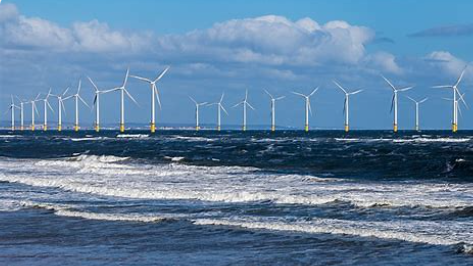Insights of the New Policy of Refund and Reform! Retired wind turbines of 45GW by 2030!
The National Energy Administration has issued the “Management Measures for Wind Farm Transformation, Upgrading and Retirement” (hereinafter referred to as the “Management Measures”), focusing on organizational management, financial subsidies, grid electricity prices, grid access, land use guarantee, recycling and disposal, etc., focusing on policy linkage, filling the “gap” in wind farm transformation, upgrading and retirement management policies, fully reflecting the continuous strengthening of top-level design by national regulatory authorities, Promote the high-quality development of wind power through a sound policy system, and assist in implementing the national strategy of carbon peaking and carbon neutrality.
Fully support preliminary investigation and research, and provide policy references. Since 2020, entrusted by the National Energy Administration, the Wind Energy Special Committee has conducted a large amount of preliminary research work on the renovation, upgrading, and retirement of wind farms. Based on rich and detailed statistical data on installed capacity over the years and on-site research, it comprehensively sorted out the installed capacity, unit operation, existing technical and policy difficulties, as well as the policy system for wind turbine retirement and replacement at home and abroad, Systematically elaborated on key issues and suggestions, providing reference for the country to formulate relevant policies. Let’s talk about my understanding and understanding based on the specific situation and policy content of the industry.
The policy of “timely rain” nourishes new energy. Entering the 14th Five Year Plan, the scale of China’s wind power retirement and renewal market has shown an exponential growth trend. The design service life of onshore wind turbines is generally 20 years. Based on this, it is estimated that 980 units will be decommissioned in 2023, with an installed capacity of 546000 kilowatts; By 2025, it will reach over 1800 units with an installed capacity of 1.25 million kilowatts; By 2030, it will exceed 34000 units with an installed capacity of approximately 45 million kilowatts. By improving relevant policies and doing a good job in the renovation, upgrading, and retirement of these units, it helps to maintain the relative stability and sustained rapid growth of the overall installed capacity of wind power. This is not only an objective need to achieve the national renewable energy development goals and the “dual carbon” goals, but also an inevitable requirement to ensure the safety and stable supply of China’s power system. At the same time, it should be noted that early wind farms had certain advantages in resources, transmission, and other aspects. However, due to the early technological level, the units used were small in capacity and low in efficiency, resulting in low utilization hours and poor economic efficiency for some projects. Moreover, due to factors such as the unit approaching its design life and insufficient supply of spare parts from the original manufacturer, the failure rate of these wind turbines has increased, making maintenance difficult. By adopting new models with more advanced technology and higher reliability to replace them, the advantages of the original site in terms of resources and grid access can be fully utilized, improving the efficiency of wind energy and land resource utilization, and enhancing project economy. From the perspective of the supply chain, the scale of the retirement and replacement market is rapidly expanding, and it is a constantly circulating market. The orderly transformation, upgrading, and retirement of wind farms will open up huge incremental market space for wind power equipment manufacturing enterprises, and is an important engine for sustainable development of the industry. In this context, the introduction of the “Management Measures” is a timely policy supply for the development of the industry, which is of great significance.
Source: CWEA



